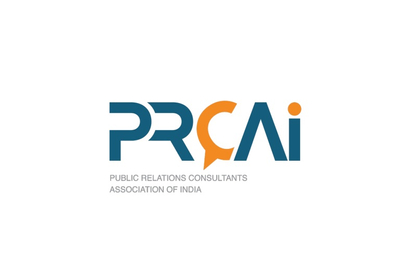
The public relations (PR) industry in India is experiencing a transformative phase, marked by rapid growth and evolving challenges. According to the SPRINT 2024-25 survey by the Public Relations Consultants Association of India (PRCAI) in collaboration with Ipsos and Astrum Reputation Advisory, the industry posted revenues of INR 2,500 crores for FY 2023, representing a 19% year-on-year growth. With a compounded decadal CAGR of 12.8%, the sector is projected to reach INR 4,570 crores by FY 2030.
“SPRINT 2024-25 serves as both a mirror and a map—reflecting the current growth state of India and the industry,” said Atul Sharma, president, PRCAI. While the growth rate outpaces global benchmarks, the report highlights cost pressures, talent management challenges, and changing client expectations as areas requiring immediate attention.
In FY22, the industry experienced a 15% growth, followed by a 19% increase in FY23, driven by the recovery from a smaller market base post-Covid-19. For FY24, an 11% growth rate is anticipated, reflecting the impact of a larger market base.
"This growth is largely attributed to the industry's ability to adapt, from leveraging AI-powered tools to expanding regional outreach and diversifying services," said Sharma.
The report also notes that while the industry has achieved a compounded annual growth rate (CAGR) of 12.8% over the past decade, growth is expected to decelerate. PR firms are facing challenges such as rising costs in talent acquisition and infrastructure, coupled with client budgets that are not increasing at a comparable rate.

PR is no longer an ancillary function; it has evolved into a strategic partner in achieving business objectives. The survey highlights a shift towards outcome-driven PR, with 90% of corporate communicators focusing on tangible business impacts rather than traditional media metrics. This transition is supported by the increasing collaboration of corporate communications teams with C-suite executives.
Private corporations remain the largest contributors to PR spending, accounting for 46% of revenues, followed by start-ups (22%) and NGOs (11%). Start-ups, in particular, are emerging as high-growth segments, leveraging PR for visibility and credibility.
The role of acquisitions and collaborations is also expanding, with 68% of consultancy heads identifying them as key drivers for global expansion, talent acquisition, and service diversification. PR budgets, which constituted 9.5% of marketing spends three years ago, are expected to rise to 15.7% in the next three years, underscoring the strategic importance of the sector.
AI: A boon and a challenge
Artificial intelligence (AI) is both a catalyst for innovation and a challenge for the Indian PR industry. According to the report, 90% of leaders view AI as critical for driving growth, particularly in research and strategy (82%), conversational AI (77%), and personalised content creation (57%).
However, investment in AI remains uneven, with only 13% of firms making significant investments, 47% adopting moderate approaches, and 30% yet to invest in enterprise tools.
AI’s ability to democratise information access also raises concerns about strategic differentiation. “As the industry embraces AI and big data, it faces the challenge of navigating AI-generated misinformation, highlighting the need for strategic differentiation for us to foster creativity, adopt the right technology, and continue to build industry-ready talent,” said Deeptie Sethi, CEO, PRCAI.
The rise of purpose-driven PR
Purpose-driven communication is gaining prominence, with organisations aligning their narratives with societal values like sustainability and diversity. Social Impact and NGOs (80%), Energy and Environment (67%), and Pharma and Healthcare (60%) are the top sectors driving this trend. However, the report cautions against “greenwashing” and emphasises authenticity in purpose-driven narratives.
Influencer marketing is another growth driver, contributing 18% to service revenues in FY24, up from 10% three years ago. This share is expected to rise to 28% by FY27. Regional storytelling is also gaining traction, with 84% of respondents predicting its growing importance.
“Cultural nuances are essential for building tailored PR strategies,” the report notes. Regional influencers and hyperlocal engagement are key to connecting with diverse audiences, but 88% of respondents believe influencer marketing requires greater accountability for business outcomes.
Talent challenges and Gen Z dynamics
The PR industry added 1,300 professionals in FY23, bringing the total workforce to 13,300. With an expected CAGR of 8%, the headcount is projected to reach 22,700 by FY 2030. However, the sector faces a 16% attrition rate, driven by issues like compensation, work-life balance, and workplace culture.
“Growth opportunities (72%), work-life balance (64%), and compensation (61%) are the top reasons for attrition,” the survey reveals. Tier II and III cities are emerging as crucial talent pools, offering adaptability and loyalty. Organisations are adopting flexible work models, but 50% of respondents believe the industry will return to a full-time, in-office setup by 2025.
Gen Z professionals are reshaping workplace dynamics. They value flexibility, inclusivity, and alignment with personal values like sustainability and diversity. However, challenges like overwhelming workloads (45%), lack of motivation (45%), and work-life balance issues (34%) persist. Recognising and rewarding talent is key to retention, with 93% of respondents emphasising the importance of boosting morale through acknowledgment and inclusivity.
“For the first time, the survey delves into behavioural changes influenced by Gen Z, highlighting their impact on workplace policies and leadership styles,” the report notes.
Budget constraints amid rising costs
Despite its growth trajectory, the PR industry faces financial pressures as client budgets fail to keep pace with escalating costs in talent and infrastructure. “While the industry has witnessed a compounded decadal CAGR of 12.8%, the growth is likely to soften as PR firms deal with intense cost pressures,” said Sharma.
To address these challenges, firms are diversifying their services and investing in regional outreach and technological advancements. AI-powered tools and big data analytics are being integrated to optimise operations and deliver value.
The PR industry in India is poised for a robust future, marked by a blend of opportunities and challenges. From embracing AI to fostering purpose-driven communication and adapting to Gen Z expectations, the sector is undergoing a profound transformation.
“The PR industry in India is undergoing a consolidation phase, characterised by a remarkable growth rate of 1.4x of GDP in 2024. This surge is driven by the increasing influence of digital media, influencer marketing, and social media,” said Deepak Hanumantharayappa, partner and country lead, Ipsos Strategy.
As the industry evolves, strategic differentiation, investment in technology, and talent management will be pivotal. Collaboration across stakeholders—consultancies, corporate teams, and policymakers—will ensure the sector continues to thrive and deliver meaningful business outcomes.


.jpg&h=334&w=500&q=100&v=20250320&c=1)
.jpg&h=334&w=500&q=100&v=20250320&c=1)
.jpg&h=334&w=500&q=100&v=20250320&c=1)


.jpg&h=334&w=500&q=100&v=20250320&c=1)








.jpg&h=268&w=401&q=100&v=20250320&c=1)



